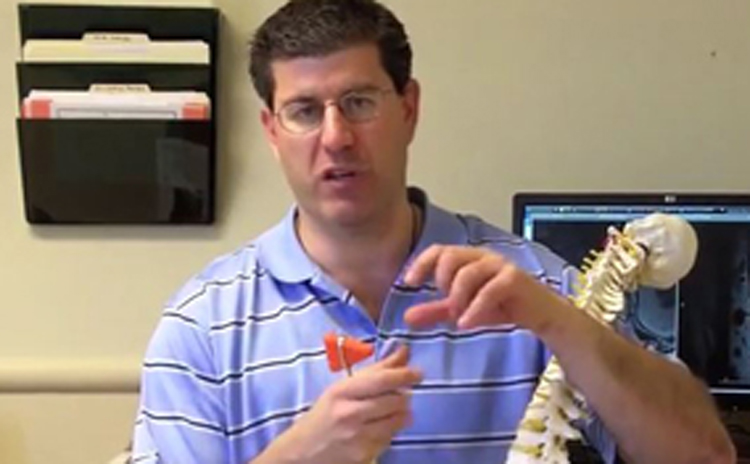Understanding the Spine
The lumbar spine is designed as a series of cushioning and gaskets. A lot of people incorrectly refer to the disc as a shock absorber, and sometimes they’ll call it a jelly donut, but that’s not really how it works. It’s really a fibrous outside, that’s similar in structure to a Chinese finger trap, that allows for motion with a firm gel on the inside. By having this gel surrounded by this fibrous outside, it allows for mobility. It’s like a gasket in a kitchen sink, or a ball bearing. The actual shock absorption occurs in the vertebral bodies. They’re structurally very similar to a marshmallow that’s been left to sit out too long and it becomes very stiff. That’s what allows for natural shock absorption. Most people, especially in the demographic that RecoveryAid was designed for, when they have back pain the most common cause is from the disc itself.
Understanding Back Pain, Symptoms, and Causes
Back pain is similar to a stomach ache in that it hurts a lot, but it’s hard to pinpoint exactly where that is. Pain in the disc, because it has a visceral nerve supply, is often described as a spasm or tightness across the back. Other characteristic symptoms are stiffness first thing in the morning for about 30 minutes, or constant shifting while seated to find a comfortable position. People with back pain are often very uncomfortable sitting or standing, but especially prolonged sitting. Car rides, plane flights, sitting at class, those are all things that are common pain generators. One of the things ActivAided is trying to do is help remind people to, first of all to try to avoid sitting as much as possible, and if you are going to sit, make sure they have good posture.
Other common conditions where ActivAided can be wonderful is something called spondylolisthesis. It’s a confusing term, but ‘spondylo’ just means spine and ‘listhesis’ means slippage. Common sports in which we see that are gymnastics, diving, butterfly swimmers, or people who play offensive line, but any kind of sport where you do repetitive extension. It can get bent, sort of like if you take a paper clip and bend it back and forth multiple times, eventually it fatigues to failure. Sometimes it hurts because it’s allowing for motion and it’s really another form of disc disease. And again, it really responds well to just being able to stabilize your core, make sure that you are not going into fluxion, or making postural deficits.
Understanding Back Pain Treatment
The mainstay of almost any back pain treatment protocol is trying to train muscles to fire in their appropriate manner and try to get rid of abhorrent biomechanical patterns, basically trying to train your muscles to act properly.
So one of things people say is: “I’m being diligent and going to physical therapy three times a week, and I don’t seem to be getting the progress that I’m looking for.” But if you think about it, there’s 168 hours in a week. Of that, most people are sleeping somewhere between 50 and 60 hours a week. So that remaining 108 hours, you’re spending three hours in physical therapy, and spending the other 105 hours doing things that are undoing everything you’re doing in physical therapy. We really can’t expect the type of benefits that you’re looking for.
So what can we do is to have that physical therapist sitting on your shoulder telling you what to do. We find postural bracing can be very effective. One of the things that is important is that we want to make sure it’s aligned properly, to have something that fits you well, something that you’ll actually wear, and something that feels good. One of the things that I love of about the ActivAided brace is that it’s been designed to fit you anatomically in a way that’s comfortable, so that people will wear it.
